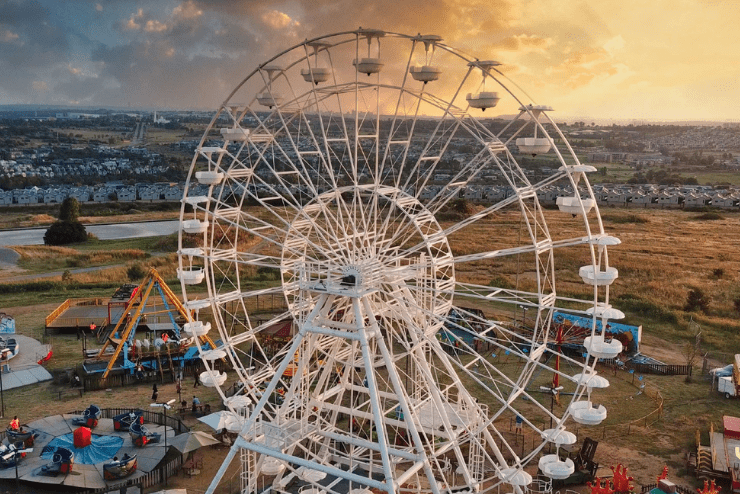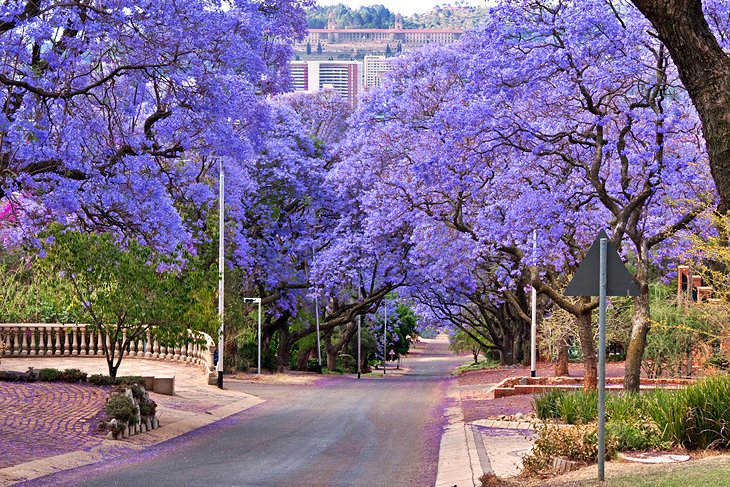The Ultimate Guide To Johannesburg North Attractions
The Ultimate Guide To Johannesburg North Attractions
Blog Article
The Main Principles Of Johannesburg North Attractions
Table of ContentsNot known Details About Johannesburg North Attractions The Ultimate Guide To Johannesburg North Attractions6 Easy Facts About Johannesburg North Attractions ExplainedJohannesburg North Attractions Fundamentals ExplainedLittle Known Questions About Johannesburg North Attractions.The Ultimate Guide To Johannesburg North Attractions
The city owes its area to the visibility of a a lot more valuable source: gold. The city grew on the edge of the Witwatersrand Main Reef, a below ground stratum of gold-bearing quartz-silica empire that arcs for numerous miles underneath the Highveld. Many of the gold mines in the city stopped procedure in the 1970s, but in its day the Witwatersrand gold sector accounted for more than 40 percent of the world's yearly gold production.Johannesburg has a warm environment. Summer temperature levels average concerning 75 F (24 C); wintertime temperature levels balance regarding 55 F (13 C) and only periodically dip listed below cold. The city enjoys about 8 hours of sunlight daily in both wintertime and summertime. Rain standards about 28 inches (700 millimetres) per year, but the complete differs considerably from year to year.
What rainfall the city receives falls practically specifically in the summer season, commonly in magnificent late-afternoon electrical storms. Air air pollution positions a significant issue, particularly in the winter season, when thermal inversions impede the westward flow of air from the Indian Ocean. Pollution is most severe in the largely resolved Black municipalities on the city's perimeter, where many residents still count on coal for fuel.

All About Johannesburg North Attractions
The balance of the city is occupied by whites. Holiday accommodation varies in personality and top quality. Soweto is infamous for its unlimited rows of municipally developed, two-room matchbox homes, yet it additionally has a few flourishing enclaves along with brimming squatter camps, where 10s of thousands live without water, power, or sanitation facilities.
Physical development, although somewhat restricted by transport, continued promptly as migration to South Africa, and Johannesburg specifically, raised significantly. This issue was resolved in the 1930s when the auto was presented in mass manufacturing to South Africa. Autos were, generally, constrained to the well-off, and allowed them to relocate to the north of the city and commute into the centre.
A lot of bad suburban areas were mixed, with bad blacks and whites living together, although the wealthy residential areas were typically reserved for whites. This transformed with the election of the why not look here National Party in the 1948 political elections, who started to formalise the system called discrimination. Discrimination formally designated which residential areas each race can reside in under the Group Locations Act.
The previous system of eleven numbered areas was reorganised in 2006. Marshalltown, as seen from the top of the Carlton Centre. The M1 and M2 run behind the buildings, and the southerly residential areas expand past the highway limit. The inner city of Johannesburg lies within the city's Area F. The estimated population of the area is 200,000, [] The number of individuals living in the internal city on an informal basis is unidentified, as lots of are illegal immigrants. A lot of higher-income locals and white individuals have transferred to the north suburbs and have actually been changed by lower-income black individuals. The unemployment, education, and age accounts of the area are all unknown, because of the trouble of obtaining reputable info regarding the location.
Rumored Buzz on Johannesburg North Attractions
Centred on the CBD, the area consists of the suburban areas of Yeoville, Bellevue, Troyeville, Jeppestown, and Berea to the east. To the west it spreads to Pageview (Johannesburg North attractions) and Fordsburg. There are little industrial continue reading this parks to the south, such as City West-Denver and Benrose. Around 800,000 travelers go through the internal city on a daily basis, and it works as a local buying node for visitors from the southerly residential areas. Yeoville and Bellevue have a mix of house structures and solitary property units on tiny great deals. The region is situated on a mountainous divide that runs from eastern to west.

More About Johannesburg North Attractions
The eastern suburban areas are some of the oldest areas of Johannesburg, there are large areas of Jewish and other European backgrounds, the majority of the population is English talking. There are three golf programs as well as a number of protected ridges with viewsites.
The location is mostly composed of old "matchbox" residences, or four-room residences constructed by the federal government, that were constructed to offer affordable holiday accommodation for black employees throughout apartheid. Soweto is an acronym, representing "South Western Townships". Street after road in this field is lined with matchboxes; nonetheless, there are a couple of smaller sized areas where thriving Sowetans have constructed houses that are much more comparable in stature with those in more affluent suburban areas.
Hostels are an additional popular physical attribute of Soweto. Originally constructed to house male migrant workers, many have been enhanced as dwellings for couples and family members. The N1 Western Bypass skirts the eastern boundary of Soweto. The suburb was not traditionally permitted to create work centres within the area, so mostly all of its locals are travelers to other parts of the city.
Little Known Questions About Johannesburg North Attractions.
The N1 Western Bypass connects the northern suburbs with the north-western suburbs. The residential locations in the north suburbs are mainly formal, without any significant locations of informal housing, or housing that lacks a permanent framework. This is an established location, there is a fad of land use change from property to business, you could look here specifically along main arterial roadways and around well-known nodes.
Roads to the eastern and west are much less well developed, as there are no highways taking a trip in that direction. Towards the northern boundary of the city, the density of advancement decreases, leaving big locations of untaught land around Midrand.
The Best Guide To Johannesburg North Attractions
The initial residential area to the north of the central city is Parktown, which is situated on a hill ignoring the internal city and Hillbrow. It has numerous wealthy locals and Edwardian-style mansions, as well as the Education and learning and Clinical schools of the University of the Witwatersrand. The huge concrete Charlotte Maxeke Johannesburg Academic Healthcare Facility dominates the skyline of Parktown.
Report this page